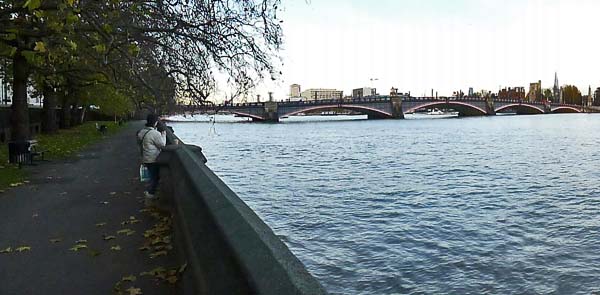|
Lambeth Bridge sits at a
point on the river that was once an important
landing stage. Long before a bridge was
built here, there was a horse-ferry that
crossed from Millbank to Lambeth. This
ferry was the inspiration for Horseferry Road
that leads onto the bridge today. After
much discussion and several failed attempts to
bring it to fruition, a bridge was built here
in 1862. It crossed the river in three
spans each just over 81 metres wide. The
iron structure of this bridge deteriorated
over time and in 1901 it was closed to
vehicular travel. Londoners had to wait
until 1932 to get a replacement.
Today’s Lambeth Bridge is a
five span steel arch bridge that is Grade II
Listed. English Heritage say of it that,
“The shallow steel arches, each
consisting of nine ribs, ....
... support a reinforced concrete roadway
between the balustrades, divided into a
carriageway flanked by two footways. .....
... Steel caissons were used in the
construction of the concrete piers which,
like the abutments, are cased in polished
Cornish granite. The coats of arms of
London County Council are sculpted on the
piers, below which two granite arms curve
down to the top of the cutwaters."


"Obelisks at either end of the bridge are
topped by stone pinecones, ancient symbols
of hospitality; they are also thought to
resemble pineapples and are linked to the
renowned C17 botanist John Tradescant who
is thought to have introduced the fruit to
this country and is buried in the former
Church of St Mary-in-Lambeth (now the
Museum of Garden History) on the eastern
approach to the bridge."
|



